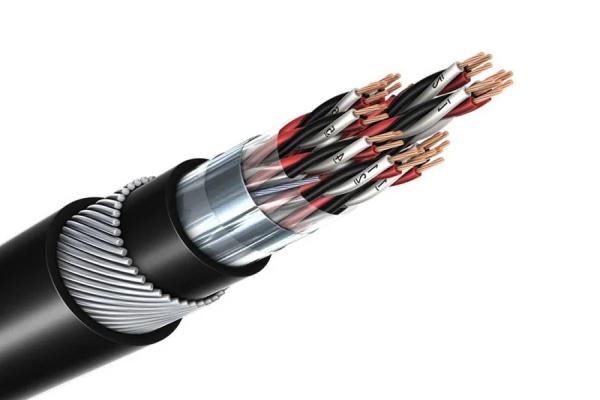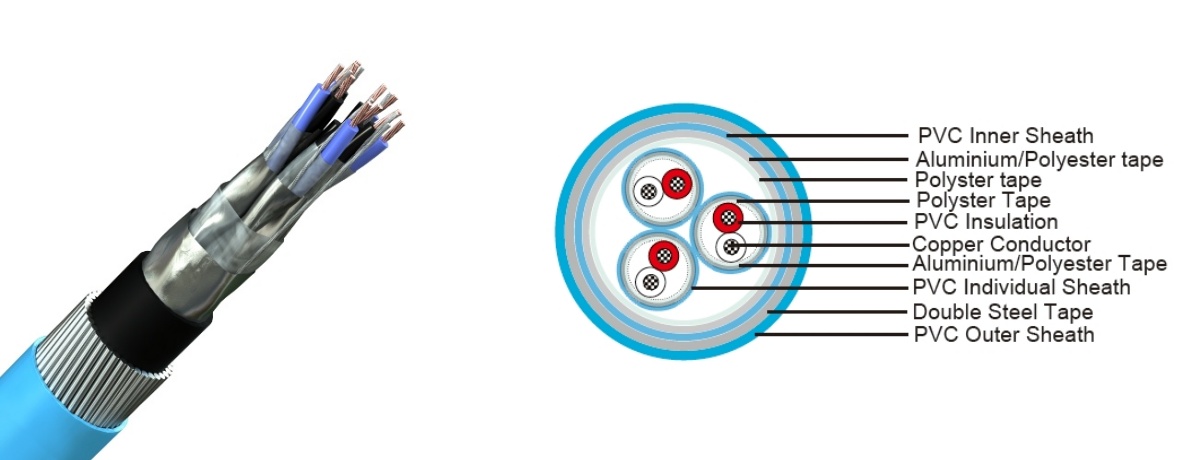

Instrumentierungskabel sind wichtige Komponenten in industriellen und kommerziellen Umgebungen, Wird verwendet, um Daten und Signale zur Überwachung und Steuerung von Geräten zu übertragen. Sie sind so konzipiert, dass sie die Signalintegrität in Umgebungen aufrechterhalten, die möglicherweise elektrisches Rauschen aufweisen können, mechanischer Spannung, und Umweltgefahren. Diese Kabel sind für präzise Kontroll- und Messprozesse von entscheidender Bedeutung, wie in chemischen Pflanzen, Stromerzeugung, Öl- und Gasindustrie, und Automatisierungssysteme. Dieser Aufsatz Veri Cable erforscht die verschiedenen Arten von Instrumentierungskabeln, ihre spezifischen Modelle, und ihre Anwendungen, Hervorhebung ihrer Bedeutung in modernen technologischen Landschaften hervorheben.


Instrumentierungskabel sind in verschiedenen Konfigurationen erhältlich, jeweils so konzipiert, dass bestimmte Anforderungen erfüllt werden. Zu den Haupttypen gehören:
Gepaarte Kabel bestehen aus zwei isolierten Leitern zusammen, die zusammengedreht sind. Diese Konfiguration trägt dazu bei, elektromagnetische Störungen zu minimieren (EMI) und Übersprechen zwischen benachbarten Paaren. Die Verdrehung der Paare ist wichtig, um die Signalintegrität über große Strecken aufrechtzuerhalten.
Anwendungen:
Triad -Kabel bestehen aus drei isolierten Leitern zusammen, die zusammengedreht sind. Die TRIAD -Konfiguration ist besonders nützlich bei Anwendungen, die mehrere Signalpfade in einem einzelnen Kabel erfordern, Reduzierung der Notwendigkeit mehrerer Kabelläufe.
Anwendungen:
Multi-Pair-Kabel bestehen aus mehreren Paaren verdrehter Leiter, Ermöglichen, dass mehrere Signale über ein einzelnes Kabel übertragen werden. Diese Kabel sind besonders vorteilhaft, um den für die Verkabelung erforderlichen physischen Raum zu verringern und die Installation zu vereinfachen.
Anwendungen:
Instrumentierungskabel können entweder abgeschirmt oder ungeschützt sein. Abschirmte Kabel enthalten eine leitfähige Materialschicht um die Leiter, um sich vor EMI zu schützen. Ungeschützte Kabel, wie der Name schon sagt, Haben Sie diese Schicht nicht.
Schirded Cables Applications:
Unschützte Kabelanwendungen:
Thermoelement -Verlängerungskabel sind speziell für für Anschließen von Thermoelementen mit Messinstrumenten. Diese Kabel müssen aus Materialien hergestellt werden, die mit dem Thermoelement kompatibel sind, um genaue Temperaturwerte zu gewährleisten.
Anwendungen:
Fieldbus -Kabel werden in digital verwendet, Zwei-Wege-Kommunikationssysteme für die industrielle Automatisierung. Mit diesen Kabeln können mehrere Feldgeräte in einem einzelnen Netzwerk verbunden werden.
Anwendungen:
Verschiedene Modelle von Instrumentenkabeln sind so konzipiert, dass sie bestimmte Standards und Anwendungen entsprechen. Diese Modelle umfassen:
PLTC -Kabel sind für die Installation in Kabelschalen und anderen industriellen Umgebungen ausgelegt. Sie sind für Stromkreise geeignet und entsprechen dem Nationalen Elektrocode (NEC) Anforderungen.
Anwendungen:
Tablettkabel (TC) sind vielseitige Kabel für die Installation in Tabletts ausgelegt, Leitungen, und andere Rassen. Sie sind für eine Vielzahl von industriellen Anwendungen geeignet und entsprechen den NEC -Anforderungen für Tablettkabel.
Anwendungen:
PLTC-ER-Kabel ähneln PLTC-Kabeln, werden jedoch für freiliegende Läufe bewertet, Dies bedeutet, dass sie außerhalb von Leitungen oder Kabelschalen für begrenzte Entfernungen installiert werden können. Dies macht die Installation flexibler und kostengünstiger.
Anwendungen:
Typ ITC -Kabel werden speziell für Instrumenten- und Steuerungsanwendungen entwickelt. Sie bieten einen überlegenen Schutz gegen EMI und sind für die Installation in Tabletts geeignet, Leitungen, und Rassen.
Anwendungen:
Instrumentierungskabel sind in verschiedenen Branchen unverzichtbar, Gewährleistung einer genauen Datenübertragung und Kontrolle. Einige wichtige Anwendungen umfassen:
In der Öl- und Gasindustrie, Instrumentierungskabel sind entscheidend für die Überwachung und Kontrolle verschiedener Prozesse. Sie werden in verwendet:
Stromerzeugungsanlagen stützen sich stark auf Instrumentenkabel zur Überwachung und Kontrolle. Anwendungen umfassen:
In der chemischen und pharmazeutischen Industrie, Präzision und Zuverlässigkeit sind von größter Bedeutung. Instrumentierungskabel werden in verwendet:
Automatisierungs- und Steuerungssysteme in verschiedenen Branchen hängen von Instrumentierungskabeln für eine zuverlässige Datenübertragung ab.
Anwendungen umfassen:
In Telekommunikation, Instrumentierungskabel sind für eine zuverlässige Datenübertragung unerlässlich. Anwendungen umfassen:
Instrumentierungskabel spielen eine entscheidende Rolle bei modernen industriellen und kommerziellen Anwendungen, Gewährleistung einer genauen und zuverlässigen Datenübertragung und Kontrolle. Die verschiedenen Arten und Modelle von Instrumentierungskabeln sind so konzipiert, dass sie bestimmte Anforderungen entsprechen, Bereitstellung von Lösungen für Umgebungen mit hoher elektromagnetischer Störung, mechanischer Spannung, und Umweltgefahren. Von der Öl- und Gasindustrie bis zur Stromerzeugung, Chemische Herstellung, Automatisierungssysteme, und Telekommunikation, Instrumentierungskabel sind unverzichtbar bei der Aufrechterhaltung der Integrität und Effizienz kritischer Prozesse. Das Verständnis der verschiedenen Arten von Instrumentenkabeln und deren Anwendungen hilft bei der Auswahl des richtigen Kabels für jeden bestimmten Bedarf, Gewährleistung einer optimalen Leistung und Zuverlässigkeit.
Wenn Menschen den Begriff mineralisch isoliertes Kabel hören, many immediately think of harsh environments like…
Wenn Telekommunikationsnetzwerke und Stromübertragungssysteme schnell wachsen, the demand for reliable and cost-effective…
In groß angelegten Öl- und Gasprojekten, Industriekabel sind nicht nur Zubehör—they are the "nervous…
In der Welt der elektrischen Verbindungen, Kabelschuhe—auch als Kabelohren oder Kabelklemmen bezeichnet—Sind…
Bei der Auswahl des richtigen Kautschukkabels für ein Elektrotechnikprojekt, it is critical to…
Liebe Partner und Kunden: 29. Januar, 2025 ist das chinesische Neujahr – Spring…